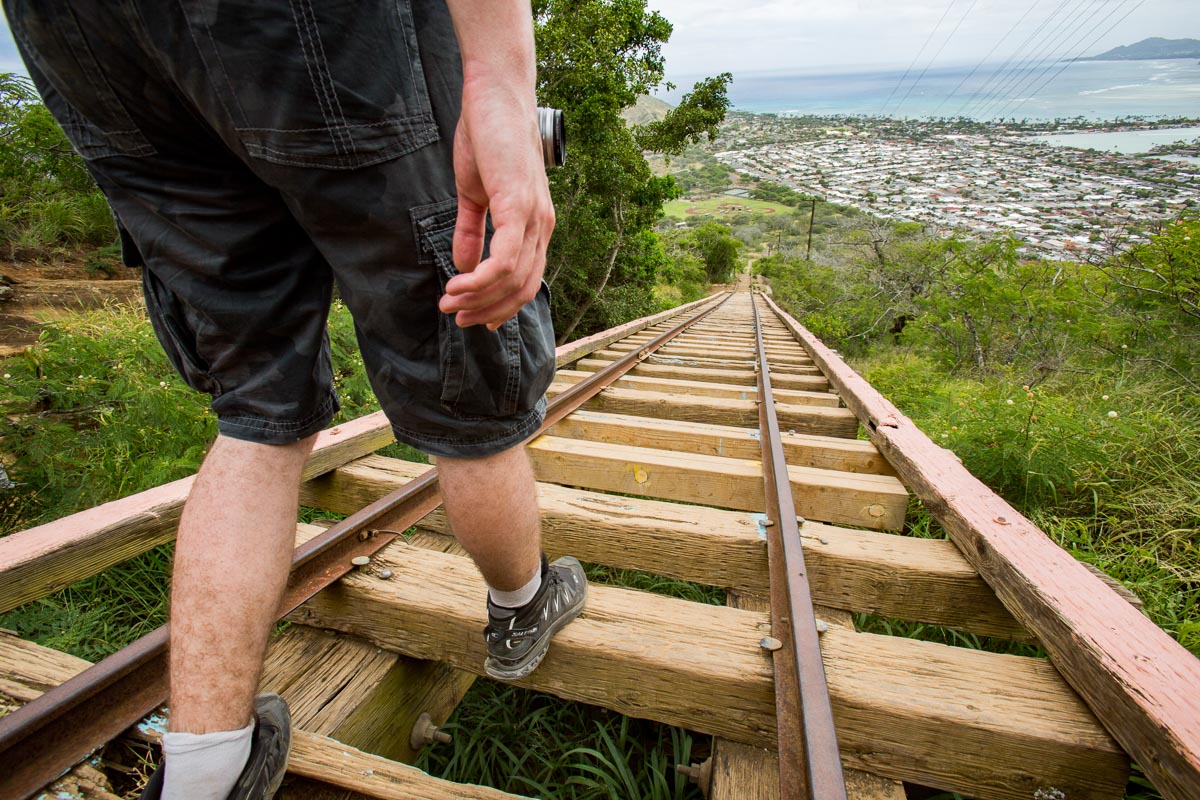

Articles
How Many Stairs Is Koko Head
Modified: February 23, 2024
Looking for articles on how many stairs are on Koko Head? Find all the information you need about Koko Head stairs and more here.
(Many of the links in this article redirect to a specific reviewed product. Your purchase of these products through affiliate links helps to generate commission for Storables.com, at no extra cost. Learn more)
Introduction
When it comes to challenging hikes with breathtaking views, Koko Head on the island of Oahu, Hawaii, is often mentioned as one of the top contenders. This popular hiking trail attracts outdoor enthusiasts from around the world with its unique and exhilarating ascent. However, one question that often comes to mind is, “How many stairs does Koko Head have?”
Before diving into the specifics of the number of stairs on the Koko Head trail, it’s important to understand what Koko Head is and what makes it such a popular hiking destination.
Koko Head is a volcanic tuff cone located on the southeastern coast of the island of Oahu. It formed thousands of years ago as a result of volcanic activity. What remains today is a steep and imposing volcanic crater that has become a favored spot for adventurers and hikers.
The Koko Head Trail is a challenging and strenuous hiking path that leads hikers to the summit of Koko Head. The trail follows the old railway track that was used during World War II for military purposes. Today, it offers hikers a unique and rewarding experience.
Many hikers are drawn to Koko Head due to the panoramic views it offers at the top. From the summit, hikers can enjoy breathtaking vistas of the Pacific Ocean, the nearby Hanauma Bay, and the surrounding neighborhoods.
Now, let’s delve into the number of stairs on the Koko Head Trail and what factors contribute to the variation in the count.
Key Takeaways:
- Conquer the Koko Head Trail’s over one-thousand steps for a physically demanding yet rewarding hike, offering panoramic views and a historical journey through Hawaii’s volcanic landscape.
- Prepare for the challenges of climbing Koko Head with essential tips, including staying hydrated, protecting from the sun, and embracing the journey’s physical and mental rewards.
Read more: How Many Flights Of Stairs Is A Mile
What is Koko Head?
Koko Head, located on the southeastern coast of Oahu, Hawaii, is a prominent volcanic tuff cone that has become a popular hiking destination. Formed thousands of years ago through volcanic activity, it boasts a challenging trail that attracts visitors and locals alike.
The cone-shaped structure of Koko Head offers a unique and picturesque landscape that overlooks the Pacific Ocean and offers stunning views of the surrounding areas. At the peak of Koko Head, hikers are rewarded with panoramic vistas of Hanauma Bay, Portlock, and even the neighboring islands on a clear day.
The Koko Head trail follows the old railway track that was once used to transport military goods during World War II. The track, known as the Koko Head Incline or Koko Crater Railway, was used by the military to transport supplies up the steep incline to the lookout bunkers at the top of Koko Head.
Today, the railway track serves as the main route for hikers attempting the challenging ascent to the summit of Koko Head. The trail consists of over one-thousand steps, making it a truly intense workout for those seeking a physical and mental challenge.
What sets Koko Head apart from other hiking trails is the combination of its scenic beauty and its historical significance. As hikers make their way up the trail, they are not only immersed in stunning natural surroundings but also reminded of the area’s military past. The remnants of the railway trestle, graffiti-covered bunkers, and vintage locomotives are all reminders of the historical importance of Koko Head during World War II.
In recent years, Koko Head has gained popularity on social media, with many hikers documenting their challenging yet rewarding experiences on platforms like Instagram and YouTube. The stunning views, the sense of accomplishment, and the unique features of the trail have made Koko Head a must-visit for avid hikers and adventure seekers.
Next, we’ll explore in depth the iconic feature of the Koko Head trail—its stairs—and discuss the variations in their count.
The Koko Head Trail
The Koko Head Trail, often called the “Koko Head Stairs,” is a challenging hiking trail located on the southeastern coast of Oahu, Hawaii. The trail starts at the base of Koko Crater and ascends steeply to the summit, offering hikers a rewarding and exhilarating experience.
What sets the Koko Head Trail apart from other hiking trails is its unique composition—the trail consists of over one-thousand steps. These steps were once part of the old railway track that was used during World War II to transport military goods and personnel up to the summit. Today, these steps serve as the main pathway for hikers to reach the top of Koko Head.
The steps, made of wooden railroad ties or concrete, are placed one after another in a steep incline, ensuring a challenging climb for hikers. Along the way, hikers will encounter varying degrees of elevation gain, adding to the intensity of the ascent.
The Koko Head Trail is regarded as a strenuous hike due to its steep incline and the demand it places on hikers’ lower body strength and endurance. It requires a combination of cardiovascular fitness, leg strength, and mental fortitude to conquer the trail successfully.
As hikers make their way up the trail, they are treated to breathtaking views of the surrounding landscape. The ascent provides stunning panoramic vistas of the sparkling blue waters of the Pacific Ocean, the lush vegetation of the nearby Hanauma Bay Nature Preserve, and the residential neighborhoods along the coast.
The Koko Head Trail is not only an excellent workout and a chance to commune with nature, but it also offers a unique historical perspective. Throughout the trail, hikers can observe remnants of the railway trestle, old bunkers, and vintage locomotives that serve as reminders of the area’s military past.
It is important to note that due to the steep and challenging nature of the trail, it is recommended that hikers come prepared with proper hiking shoes, plenty of water, and sun protection. The trail is not recommended for individuals with mobility issues or those who are not accustomed to intense physical activity.
Next, we’ll explore the factors that contribute to the variation in the number of stairs on the Koko Head Trail.
The Length of the Koko Head Trail
The length of the Koko Head Trail is one aspect that hikers often question when planning their hike. While it’s commonly referred to as the “Koko Head Stairs,” the trail encompasses more than just the stairs themselves.
The Koko Head Trail is approximately 1.8 miles (2.9 kilometers) long from the trailhead to the summit. This distance includes the steep ascent up the stairs, as well as the descent back down. The trailhead is located near the Koko Head District Park, where hikers can begin their ascent to the top of Koko Head.
As hikers start their journey, they will encounter the iconic stairs that make up a significant portion of the trail. The stairs, consisting of either wooden railroad ties or concrete steps, extend for approximately 0.8 miles (1.3 kilometers). The steep incline and the relentless number of steps create a physically demanding experience for hikers.
After conquering the stairs, hikers reach the summit of Koko Head, where they are rewarded with breathtaking panoramic views and a sense of accomplishment. At the summit, hikers can take a moment to rest, enjoy the scenery, and capture memorable photographs before descending back down.
The descent can be just as challenging as the ascent, as hikers need to carefully navigate the steep steps while maintaining balance and control. It’s important to exercise caution and use handrails where available during the descent to ensure a safe hike back to the trailhead.
While the length of the Koko Head Trail may seem relatively short compared to other hiking trails, its intensity and steepness make it a physically demanding adventure. Hikers should allocate a sufficient amount of time to complete the hike and take breaks as needed to rest and recharge.
Additionally, it’s crucial to consider weather conditions, as the trail can become slippery and more challenging during rainy or windy weather. Hikers should check weather forecasts and be prepared with appropriate gear and attire for the conditions they may encounter on the trail.
In the next section, we will explore the various factors that contribute to the variation in the number of stairs on the Koko Head Trail.
Factors that Influence the Number of Stairs
When it comes to determining the exact number of stairs on the Koko Head Trail, there are several factors that contribute to the variation. While the trail is commonly referred to as having over one-thousand steps, the actual count may fluctuate slightly depending on specific conditions and modifications made to the trail over time.
One factor that influences the number of stairs is the material used to construct them. The Koko Head stairs are often made of either wooden railroad ties or concrete steps. The height and width of each step can vary, resulting in slight variations in the count.
Another element that affects the number of stairs is the condition of the trail. Over time, the steps may deteriorate, requiring repairs or replacements. Modifications or renovations to the trail can also impact the number of stairs. It’s important to note that maintenance efforts and improvements are periodically made to ensure the safety and accessibility of the trail.
The height and steepness of the trail are additional factors that contribute to the number of stairs. The Koko Head Trail features a significant incline, which translates into a greater number of steps needed to reach the summit. The exact elevation gain and the determined distance between each step can vary, potentially affecting the overall count.
Furthermore, hikers’ perception and sense of measuring steps can also lead to variations in reported counts. Each individual may have a slightly different stride length or interpretation of what constitutes a “step,” contributing to small discrepancies in the total number of stairs counted.
It’s essential to recognize that while the exact number of stairs may vary slightly, the overall experience of the Koko Head Trail remains challenging and physically demanding. The focus should be on embracing the journey, admiring the incredible views, and embracing the mental and physical rewards that come from completing this invigorating hike.
In the next section, we will explore how the exact number of stairs on the Koko Head Trail can be determined and some of the challenges involved in counting them accurately.
Koko Head on the island of Oahu in Hawaii has 1,048 steps to the top. It’s a popular hiking spot with a challenging incline, so be prepared for a good workout!
Determining the Exact Number of Stairs
Determining the exact number of stairs on the Koko Head Trail is no simple task. Due to various factors, including the materials used, trail conditions, and individual perceptions, the count can vary slightly. However, there are a few methods that can be employed to estimate the number of stairs.
One way to roughly calculate the number of stairs is by visual estimation. As hikers ascend the trail, they can visually assess the number of steps based on their own perception. This method may give them an approximate count, but it may not be entirely accurate due to individual variances and interpretations of what defines a “step.”
Another approach is to use existing resources such as trail guides, hiking blogs, or online platforms where hikers share their experiences. These sources often provide an estimated number of stairs, which can serve as a helpful reference point for hikers planning their hike. However, it’s important to keep in mind that these estimates may not always be precise.
Some hikers may choose to physically count the stairs as they hike the Koko Head Trail. This method involves carefully counting each step as they progress along the trail. However, it can be challenging to maintain an accurate count, especially during the steep and strenuous sections. Distractions, fatigue, or even losing track during the count can lead to inconsistencies.
Trail markers or visual indicators can also aid in estimating the count. Some hikers may notice markings, signs, or milestones along the trail that indicate the number of steps. These markers can assist in determining the count, but they may not be present throughout the entire trail.
It’s important to remember that while the exact number of steps may vary, focusing solely on the count can take away from the overall experience of hiking the Koko Head Trail. Instead, embracing the physical challenge, enjoying the stunning views, and immersing oneself in the history and natural beauty of the area should be the primary focus.
Next, we will explore the challenges associated with climbing Koko Head and provide some helpful tips for those embarking on this exhilarating hike.
Challenges of Climbing Koko Head
Climbing Koko Head is not for the faint of heart. The trail presents several challenges that hikers must overcome to reach the summit. Understanding these challenges is crucial for anyone considering taking on this exhilarating adventure.
One of the main challenges of climbing Koko Head is the steep and relentless incline. The trail consists of over one-thousand steps that ascend at a steep angle, demanding a high level of physical endurance and lower body strength. The intense elevation gain can be physically demanding, requiring hikers to push themselves mentally and physically to reach the top.
Additionally, the trail lacks shade, and hikers are exposed to the elements during their ascent. The hot and humid climate of Hawaii can make the hike even more challenging, as it can lead to increased fatigue and risk of dehydration. It is crucial to come prepared with an ample supply of water and sun protection to stay hydrated and protected from the sun’s rays.
The condition of the trail can also pose challenges. Depending on when the trail was last maintained, some sections may be uneven or require careful navigation. Hikers must exercise caution and pay attention to their footing to avoid slipping or tripping, especially during the descent.
Throughout the hike, hikers will encounter breathtaking views that can be both inspiring and distracting. It’s essential to strike a balance between enjoying the scenery and maintaining focus on the trail to ensure a safe and successful hike.
Furthermore, the physical demands of the trail can take a toll on hikers’ energy levels and stamina. It’s crucial to pace yourself and take breaks as needed to rest and recuperate. Overexertion can lead to exhaustion and increase the risk of injury. It’s important to listen to your body and make informed decisions about when to push forward and when to take a break.
Lastly, it’s worth noting that the popularity of Koko Head means that hikers may encounter crowded conditions, especially during peak times. Patience and sharing the trail with others are essential to maintain a positive and enjoyable experience for everyone.
Despite these challenges, conquering Koko Head is a rewarding experience that offers incredible views and a sense of accomplishment. With proper preparation, a positive mindset, and a willingness to embrace the physical and mental challenges along the way, hikers can overcome these obstacles and make lasting memories.
In the final section, we will provide some valuable tips for those planning to hike Koko Head.
Tips for Hiking Koko Head
Embarking on the Koko Head hike requires careful preparation and consideration. Here are some essential tips to help hikers make the most of their Koko Head experience:
- Bring Sufficient Water: Staying hydrated is crucial during the hike, especially with the Hawaiian sun and rigorous physical activity. Carry an ample supply of water to ensure you remain hydrated throughout the journey.
- Protect Yourself from the Sun: Hawaii’s tropical climate can be unforgiving, so it’s important to protect yourself from the sun. Wear sunscreen, a hat, and sunglasses to shield yourself from harmful UV rays, and consider wearing lightweight, breathable clothing to keep cool.
- Wear Appropriate Footwear: The trail can be steep and challenging, so it’s essential to wear sturdy, comfortable footwear that provides good traction. Hiking shoes or athletic sneakers with good grip are recommended to prevent slips and falls.
- Start Early: Begin your hike as early as possible to avoid the midday heat and crowds. Starting early allows you to enjoy cooler temperatures and stunning sunrise views from the summit.
- Take Breaks: Pace yourself during the ascent. Take short breaks along the way to rest, rehydrate, and recharge. Listen to your body and be mindful of your energy levels to avoid overexertion.
- Use Handrails: Utilize the handrails provided along the trail, especially during the descent. They will assist in maintaining balance and stability, ensuring a safer hike.
- Be Courteous to Others: Koko Head is a popular hiking trail, so you may encounter other hikers along the way. Be respectful, share the trail, and allow faster hikers to pass when possible.
- Capture Memories Safely: While it’s tempting to document your journey, remember to prioritize safety. Take photos and videos from safe locations and be aware of your surroundings. Don’t jeopardize your safety or the safety of others by taking unnecessary risks for the perfect shot.
- Leave No Trace: Help preserve the natural beauty of Koko Head by practicing Leave No Trace principles. Carry out any trash with you and respect the environment by not damaging or removing any plants or wildlife.
- Stay Informed: Check weather conditions before your hike and be aware of any trail advisories or closures. Stay informed about any changes that may affect your hike, and adjust your plans accordingly.
By following these tips, you can have a safer and more enjoyable hiking experience on Koko Head. Remember, the journey is just as important as the destination, so take your time, savor the beautiful views, and embrace the challenges along the way. Happy hiking!
Concluding this article, we have explored the various aspects of Koko Head, including what it is, the Koko Head Trail, the number of stairs, challenges, and tips for a successful hike. Whether you’re a seasoned hiker or a first-time adventurer, Koko Head offers a thrilling and rewarding experience that will leave you with memories to cherish.
Conclusion
Embarking on the Koko Head Trail is a truly unforgettable experience, offering hikers a challenging adventure and breathtaking views of the surrounding beauty. While the exact number of stairs on the trail may vary due to factors such as materials used and trail conditions, the overall journey remains an invigorating and rewarding one.
Koko Head, with its steep incline and over one-thousand steps, demands physical strength, endurance, and mental resilience from hikers. The trail’s historical significance adds an extra layer of intrigue and exploration, allowing hikers to connect with the past while undertaking this remarkable journey.
As hikers make their way up the trail, they encounter panoramic vistas of the Pacific Ocean, Hanauma Bay, and the vibrant neighborhoods of Oahu. The challenging ascent, combined with the captivating views, make Koko Head a must-visit destination for outdoor enthusiasts and adventure seekers.
However, it’s important to recognize and prepare for the challenges that come with climbing Koko Head. Proper hydration, sun protection, and appropriate footwear are essential for a safe and enjoyable hike. Hikers should also be mindful of their energy levels, take breaks when needed, and adhere to safety measures such as using handrails during the ascent and descent.
With careful planning and adherence to safety guidelines, hikers can conquer Koko Head’s steep trail and savor the sense of accomplishment that comes with reaching the summit. Remember to respect the environment by practicing Leave No Trace principles and being courteous to fellow hikers along the way.
In conclusion, the Koko Head Trail offers not only a physically demanding experience but also a journey that showcases the natural beauty and historical significance of the area. Whether you are seeking a challenging workout, stunning views, or a chance to immerse yourself in history, Koko Head is sure to leave a lasting impression and create memories that will be cherished for years to come.
Frequently Asked Questions about How Many Stairs Is Koko Head
Was this page helpful?
At Storables.com, we guarantee accurate and reliable information. Our content, validated by Expert Board Contributors, is crafted following stringent Editorial Policies. We're committed to providing you with well-researched, expert-backed insights for all your informational needs.

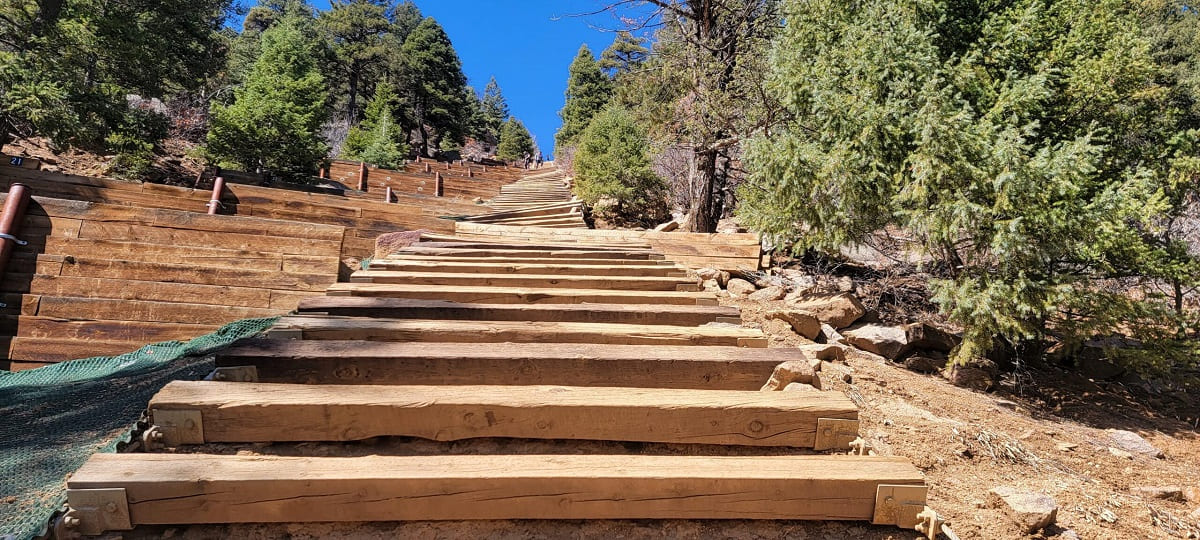



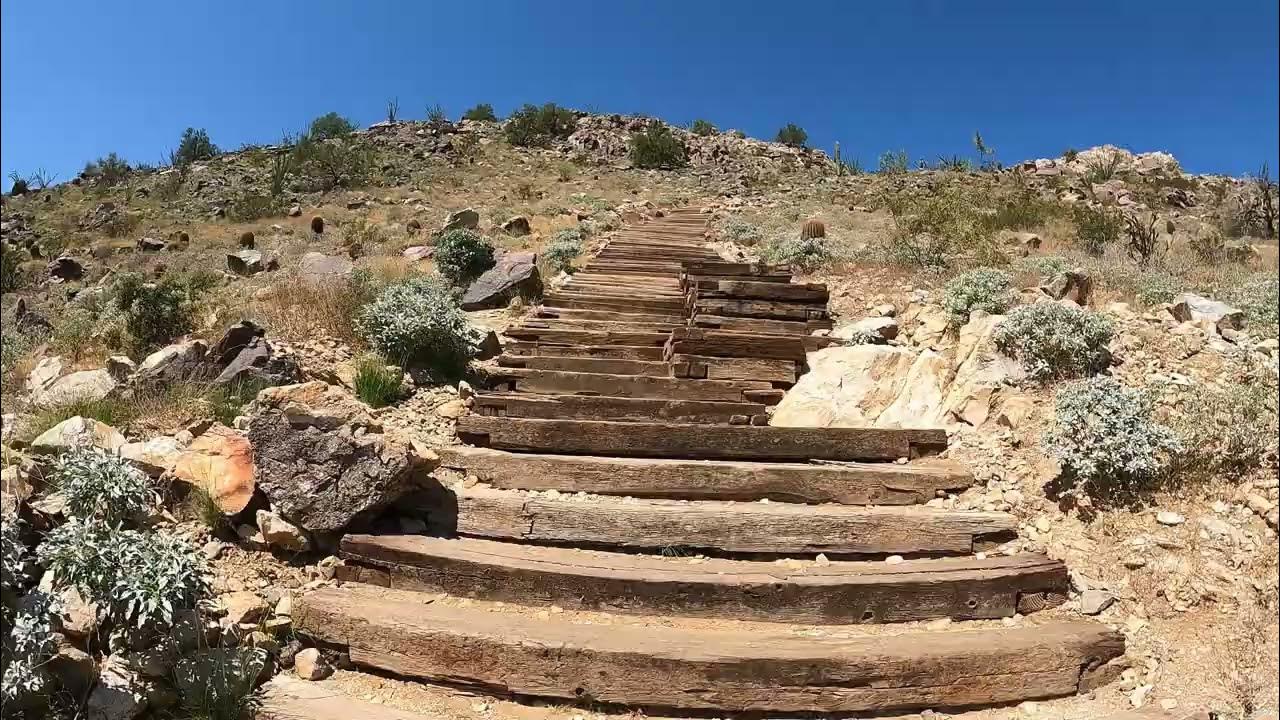


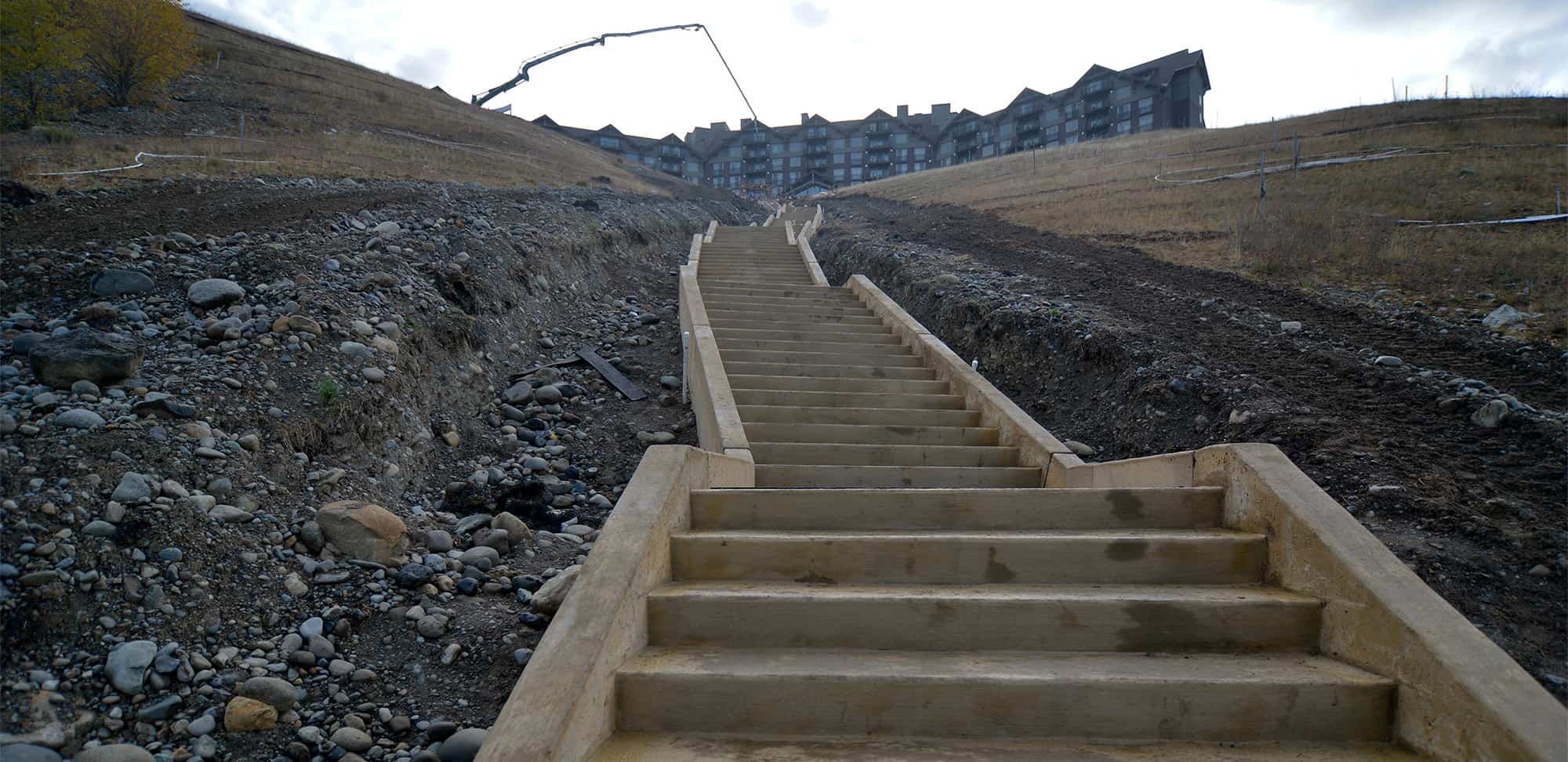



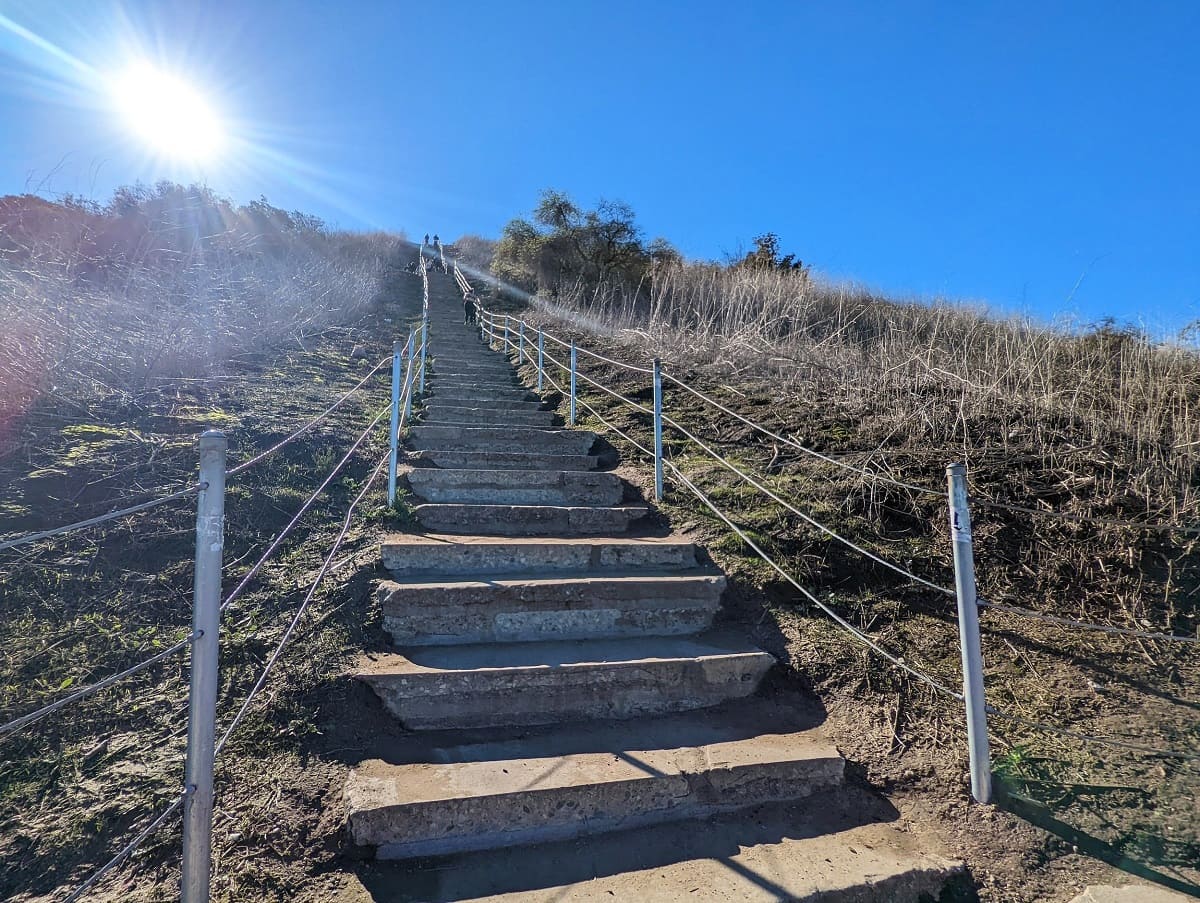


0 thoughts on “How Many Stairs Is Koko Head”